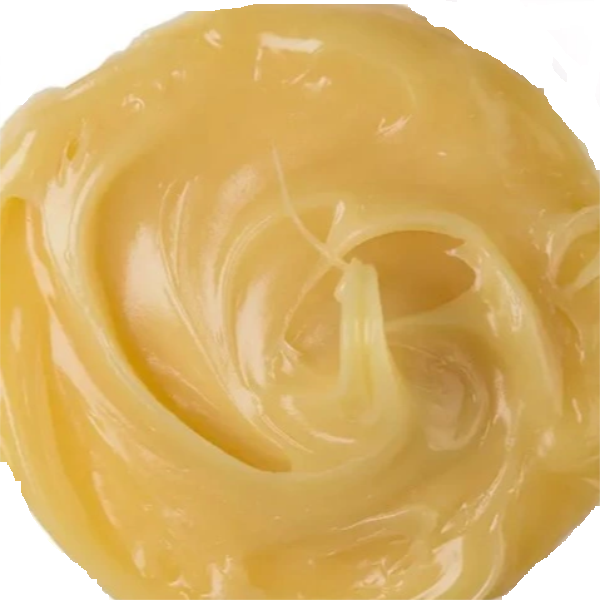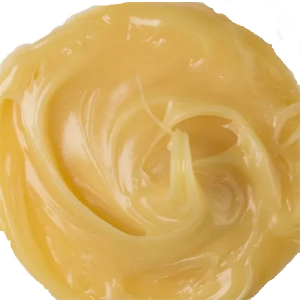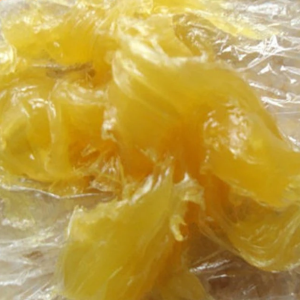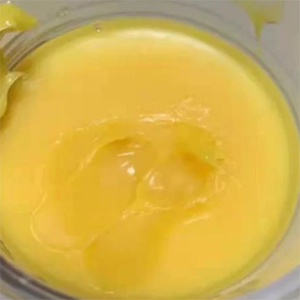Lanolin Anhydrous CAS 8006-54-0 USP Standrad
Shanghai Ruifu Chemical Co., Ltd. is the leading manufacturer of Lanolin Anhydrous (CAS: 8006-54-0) with high quality and purity, has more than 25 years production experience of Lanolin Anhydrous. Lanolin Anhydrous is made from high-quality merino wool in Australia, using advanced solvent-free and environmentally friendly purification technology to refine and refine in multiple steps. Our Lanolin Anhydrous can meet the latest pharmacopoeia standards, well received by domestic and foreign customers. Ruifu Chemical can provide worldwide delivery, competitive price, excellent service, small and bulk quantities available. Purchase Lanolin Anhydrous (CAS: 8006-54-0), Please contact: alvin@ruifuchem.com
| Chemical Name | Lanolin Anhydrous |
| Synonyms | Lanolin; Wool Fat Lanolinum; Industrial Lanolin; Wool Fat; Wool Grease; Wool Wax; Adeps Lanae |
| Stock Status | In Stock, Production Capacity 1000 Metric Ton/Year |
| CAS Number | 8006-54-0 |
| Melting Point | 38.0~44.0℃ |
| Flash Point | 209℃ |
| Density | 0.932~0.945 g/cm3 |
| Solubility | Soluble in Ether, Petroleum Ether, Chloroform and Petroleum Benzene. Sparingly Soluble in Ethanol. Insoluble in Water |
| COA & MSDS | Available |
| Sample | Available |
| Origin | Shanghai, China |
| Valid Period | 3 Years When Properly Stored |
| Brand | Ruifu Chemical |
| Items | Specifications | Results |
| Appearance | Pale Yellow, Tenacious, Unctuous Substance | Conforms |
| Odor | Without Abnormal Odor | Conforms |
| Iodine Value (gI2/100g) | 18.0~36.0 | 29.1 |
| Color by Gardner | <10 | 8.5 |
| Acid Value (mgKOH/g) | <1.0 | 0.86 |
| Melting Point | 38.0~44.0℃ | 39.2℃ |
| Water by Karl Fischer | <0.25% | 0.18% |
| Residue on Ignition | <0.10% | 0.06% |
| Water-Soluble Acids & Alkalis | Relevant Requirements | Pass |
| Water-Soluble Oxidizable Substances | Relevant Requirements | Pass |
| Chlorides | Relevant Requirements | Pass |
| Ammonia | Relevant Requirements | Pass |
| Alkalinity | Relevant Requirements | Pass |
| Saponification (mgKOH/g) | 90.0~105.0 | 97.1 |
| Acidity | Relevant Requirements | 1.53 |
| Identification | Relevant Requirements | Pass |
Package: Bottle, 25kg/Drum, 50kg/Drum, 200kg/Drum, or according to customer's requirement.
Storage Condition: Keep the container tightly closed and store in a cool, dry and well-ventilated warehouse away from incompatible substances. Protect from light and moisture.
Shipping: Deliver to worldwide by air, by FedEx / DHL Express. Provide fast and reliable delivery.
Lanolin
Lanolin is the purified, wax-like substance from the wool of sheep, Ovis aries Linné (Fam. Bovidae), that has been cleaned, decolorized, and deodorized. It contains not more than 0.25 percent of water. It may contain not more than 0.02 percent of a suitable antioxidant.
Packaging and storage- Preserve in well-closed containers, preferably at controlled room temperature.
Labeling- The label states that it is not to be used undiluted.
USP Reference standards <11>-
USP Lanolin RS
Melting range, Class II <741>: between 38 and 44, determined on a test specimen previously cooled to between 8 and 10.
Acidity <401>-The free acids in 10.0 g require for neutralization not more than 2.0 mL of 0.10 N sodium hydroxide.
Alkalinity-Dissolve 2.0 g in 10 mL of ether, and add 2 drops of phenolphthalein TS: the liquid is not colored red.
Water- Dissolve about 25 g, accurately weighed, in 75 mL of a Mixed solvent consisting of 3 parts of chloroform and 2 parts of methanol, and dilute with Mixed solvent to 100.0 mL. Determine the water content of a 10.0-mL portion as directed under Water Determination, Method I <921>. Perform a blank determination on 10.0 mL of Mixed solvent, and make any necessary correction. Not more than 0.25% is found.
Residue on ignition <281>: not more than 0.1%.
Water-soluble acids and alkalies- Warm 10.0 g with 50 mL of water on a steam bath, constantly stirring the mixture until the Lanolin is melted: the fat separates completely on cooling, leaving the water layer nearly clear and neutral to litmus. Retain the water layer.
Water-soluble oxidizable substances- A 10-mL portion of the solution from the test for Water-soluble acids and alkalies does not completely decolorize 50 µL of 0.10 N potassium permanganate within 10 minutes.
Chloride <221>- Boil 20 mL of alcohol with 1.0 g of Lanolin under a reflux condenser, cool, add 1 mL of 2 N nitric acid, filter, and to the filtrate add 5 drops of a solution of silver nitrate in alcohol (1 in 50): any turbidity produced does not exceed that of a blank to which 0.50 mL of 0.020 N hydrochloric acid has been added (0.035%).
Ammonia- Add 1 mL of 1 N sodium hydroxide to a 10-mL portion of the solution from the test for Water-soluble acids and alkalies, and boil: the vapors do not turn red litmus blue.
Iodine value <401>: between 18 and 36, determined on a specimen of 780 to 820 mg.
Foreign substances- [note- Use pesticide-free grade reagents and solvents throughout this test. Reference materials of pesticides for use in the Standard preparation may be obtained from any commercial source.* ]
Standard stock solutions- Prepare stock solutions in hexane, each having a known concentration of 100 mg of reference pesticide per L. [note-Concentrated stock solutions may be stored in the dark in glass-stoppered containers in a refrigerator at 2 to 5 for up to 1 year. Most pesticides may be dissolved directly in hexane; however, the hexachlorocyclohexane isomers and the DDT group of pesticides may require initial dissolution in the minimum volume of acetone followed by dilution with hexane to the specified concentration.]
Standard preparation- Dilute accurately measured volumes of the Standard stock solutions quantitatively with hexane, and combine to obtain a composite Standard preparation having the concentrations indicated in Table 1. Store the composite Standard preparation in a glass-stoppered glass container in the dark at 2 to 5, and replace it every 2 months. [note-Two or more separate composite Standard preparations, each preferably containing not more than 8 reference pesticides, may be prepared if needed. Reference pesticides should be selected for composite Standard preparations on the basis that relative retention times (see Table 1) differ sufficiently so that peaks in chromatograms will be expected not to overlap, and they should be selected and combined appropriately for the chromatographic system and detector used.]
Gel permeation chromatography cleanup system-
eluant-Prepare a mixture of methylene chloride and hexane (1:1).
Table 1
Standard preparation (Concentration in µg per mL) Relative retention times (relative to 1.0 for Chlorpyrifos)
Reference pesticide* Electron- capture detector Flame- photometric detector System I System II
Tetrachloronitrobenzene [TCBN] 0.05 - 0.29 0.24
alpha Hexachlorocyclohexane (alpha BHC) 0.05 - 0.40 0.35
beta Hexachlorocyclohexane (beta BHC) 0.30 - 0.43 0.56
Hexachlorobenzene (HCB) 0.05 - 0.45 0.33
gamma Hexachlorocyclohexane (Lindane) 0.05 - 0.48 0.41
Propetamphos - 0.30 0.48 0.42
Diazinon - 0.20 0.52 0.40
Dichlofenthion 0.10 0.20 0.67 0.56
Ronnel 0.30 0.40 0.81 0.66
Heptachlor 0.10 - 0.83 0.60
Malathion - 0.40 0.91 1.05
Chlorpyrifos 0.30 0.30 1.00 1.00
Aldrin 0.20 - 1.05 0.76
Pirimiphos Ethyl - 0.40 1.14 1.14
Chlorfenvinphos Z 0.40 0.40 1.17 1.40
Heptachlor epoxide 0.20 - 1.29 1.17
Chlorfenvinphos E 0.40 0.50 1.30 1.51
Bromophos ethyl 0.40 0.50 1.51 1.45
1,1¢-dichloro-2-(2-chlorophenyl)-2-(4-chlorophenyl)ethene (o,p-DDE) 0.30 - 1.55 1.51
1,1¢-dichloro-2-(4-chlorophenyl)-2-(4-chlorophenyl)ethene (p,p-DDE) 0.30 - 1.88 1.86
Stirophos 0.60 0.80 1.58 1.97
alpha Endosulfan 0.40 - 1.63 1.47
1,1¢-dichloro-2-(2-chlorophenyl)-2-(4-chlorophenyl)ethane (o,p-TDE) 0.40 - 1.90 2.19
Dieldrin 0.30 - 1.91 1.84
Endrin 0.40 - 2.13 2.29
beta Endosulfan 0.40 - 2.19 2.77
1,1-dichloro-2,2-bis(4-chlorophenyl)ethane (p,p-TDE) 0.40 - 2.41 2.87
1,1,1-trichloro-2-(2-chlorophenyl)-2-(4-chlorophenyl)ethane (o,p-DDT) 0.40 - 2.55 2.70
Ethion 1.00 0.40 2.56 3.36
Carbophenothion 0.80 1.00 2.94 3.70
1,1,1-trichloro-2,2-bix(4-chlorophenyl)ethane (p,p¢-DDT) 0.50 - 3.13 3.50
Methoxychlor 0.60 - 4.70 7.20
Carbophenothion Sulfone 5.00 - 5.10 9.20
Carbophenothion Sulfoxide 5.00 - 5.40 10.00
* Suitable materials may be obtained from either Chem Service, 660 Tower Lane, P.O. Box 3108, Westchester, PA 19381-3108 or Greyhound, 88 Grange Road West, Birkenhead, Merseyside, L43 4XF, England U.K.
apparatus-The gel permeation chromatograph is equipped with a 25-mm × 50-cm column, packed with a slurry of 35 g of styrene-divinylbenzene copolymer beads compressed to a bed length of approximately 20 cm. The Eluant is pumped at a flow rate of about 5 mL per minute with an operating pressure of 8 to 11 psi. Set up the chromatograph, adjusting to discard the fraction eluting from 0 to 12 minutes, collect the fraction eluting from 12 to 32 minutes, and rinse for 2 minutes, discarding the rinse fraction.
System suitability-
elution of lanolin-Melt a suitable quantity of Lanolin, and pass through a fluted filter paper into a container. Transfer about 6.0 g of the warm filtered Lanolin, accurately weighed, to a 50-mL volumetric flask. Dilute with Eluant to volume, mix, and filter. Transfer 5.0 mL of this solution to the gel permeation chromatographic column, and elute with Eluant. Collect 100 mL of the column effluent in tared beakers in 10-mL increments. Evaporate the solvent, cool, weigh the beakers and contents, and calculate the amount of lanolin eluted in each 10-mL increment. The column is suitable if not less than 96% of the lanolin elutes in the first 60 mL.
elution of pesticide from lanolin-Dissolve suitable quantities of diazinon, diclofenthion, bromophos ethyl, lindane, and dieldrin in hexane to obtain a Standard solution having concentrations, in each mL, of 0.4, 0.4, 1.0, 0.1, and 0.6 µg, respectively. Transfer 5.0 mL of this solution to a 10-mL volumetric flask containing 1 g of USP Lanolin RS, dilute with methylene chloride to volume, and mix. Transfer 5 mL of this solution to the gel permeation chromatographic column, and elute with 160 mL of Eluant. Discard the first 60-mL fraction, and collect the next 100-mL fraction (from 60 to 160 mL). Transfer this collection fraction to a concentrator fitted with a graduated collection flask, add 50 mL of hexane, and concentrate by evaporation to 5 mL. Inject about 5 µL of this fraction into the chromatographs described under Chromatographic system I and Chromatographic system II, record the chromatograms, and measure the heights of the peaks obtained from the five pesticides in the Standard solution. Calculate the recoveries of each of the five pesticides used in the fortified USP Lanolin RS solution. Prepare a test solution by mixing hexane with the Standard solution (1:1). Inject 5 µL of the test solution into the chromatographs described under Chromatographic system I and Chromatographic system II, record the chromatograms, and measure the peak heights of the five pesticides in the chromatogram of the test solution. Compare the peak heights obtained from the fraction of the Standard solution to the peak heights of the corresponding pesticides obtained from the test solution: not less than 85% of the added amounts of each of the five pesticides is recovered.
Test preparation-Transfer about 6 g of Lanolin, accurately weighed and previously melted to liquid form by heating on a hot water bath if necessary, to a 50-mL volumetric flask, dissolve in 25 mL of Eluant, dilute with Eluant to volume, mix, and filter. Transfer 5.0 mL of this solution to the column, and elute with 160 mL of Eluant. Discard the first 60-mL fraction, and collect the remaining fraction in a suitable evaporator. Concentrate by evaporation on a steam bath to about 3 mL, add about 50 mL of hexane, and evaporate again to remove all traces of methylene chloride, adjusting the volume with hexane to 3.0 mL.
Chromatographic system I (see Chromatography <621>)-The gas chromatograph is equipped with an electron-capture detector and a 0.53-mm × 30-m fused silica capillary column bonded with a 1.5-µm layer of phase G1 and a 0.53-mm × 6-m fused silica uncoated guard column connected to a modified packed column-type injector system. The column temperature is maintained at 200. [note-The initial temperature of the column may be adjusted so that the retention times of p,p¢-DDT and ethion are about 3.1 and 2.56, respectively, relative to chlorpyrifos.] Helium is used as the carrier gas. The flow rate of about 25 mL per minute is adjusted so that the retention time of chlorpyrifos is about 4 minutes. The flow rate of the makeup gas, nitrogen, is about 40 minutes.
Chromatographic system II-The gas chromatograph is equipped with a flame-photometric detector and a 0.53-mm × 30-m fused silica capillary column bonded with a 1.0-µm layer of phase G3 and a 0.53-mm × 6-m fused silica uncoated guard column connected to a modified packed column type injector system. The column temperature is maintained at 200. [note-The initial temperature of the column may be adjusted so that the retention time of ethion is about 3.36 relative to that of chlorpyrifos.] Helium is used as the carrier gas at a flow rate of about 25 mL per minute, adjusted so that the retention time of chlorpyrifos is about 4 minutes. The flow rate of the makeup gas, nitrogen, is about 40 mL per minute. [note-Determine the detector sensitivity for Chromatographic systems I and II: Select electrometer attenuation so that injection of 1.5 ng of chlorpyrifos produces 50% full-scale deflection on a recorder or printer-plotter. If these detector conditions are outside the linear range of the detector, adjust to the linear range, and record the quantity, in ng, of chlorpyrifos producing 50% full-scale deflection at these conditions.]
Procedure-[note-The procedure described below is to be followed for Chromatographic systems I and II. ] Inject separately equal volumes (about 5 µL) of the appropriate composite Standard preparation and the Test preparation into the gas chromatograph, record the chromatograms, and measure the areas of all the peaks observed in the chromatograms. Compare the peak areas of any of the pesticide residues in the chromatogram of the Test preparation obtained from each chromatographic system with those of the peaks that correspond to the retention times in the chromatogram of the appropriate composite Standard preparation obtained from each of the corresponding chromatographic systems. Calculate the quantity, in ppm, of the individual specified residue found in the sample taken by the formula:
30(C / W)(rU / rS)
in which rU and rS are the peak areas of the residue found in the Test preparation and the Standard preparation; respectively; C is the concentration, in mg per L, of the reference pesticide in the Standard preparation; and W is the weight, in g, of Lanolin taken: not more than 10 ppm of any individual specified residue is found, and the total of all specified residues found is not more than 40 ppm.
Petrolatum-Heat about 3 g, accurately weighed, on a steam bath, with frequent stirring, until its weight loss is not less than its water content. Boil 40 mL of dehydrated alcohol with 500 mg of the dried lanolin so obtained: the solution is clear or not more than opalescent.
How to Purchase? Please contact Dr. Alvin Huang: sales@ruifuchem.com or alvin@ruifuchem.com
15 Years Experience? We have more than 15 years of experience in the manufacture and export of a wide range of high quality pharmaceutical intermediates or fine chemicals.
Main Markets? Sell to domestic market, North America, Europe, India, Korea, Japanese, Australia, etc.
Advantages? Superior quality, affordable price, professional services and technical support, fast delivery.
Quality Assurance? Strict quality control system. Professional equipment for analysis include NMR, LC-MS, GC, HPLC, ICP-MS, UV, IR, OR, K.F, ROI, LOD, MP, Clarity, Solubility, Microbial limit test, etc.
Samples? Most products provide free samples for quality evaluation, shipping cost should be paid by customers.
Factory Audit? Factory audit welcome. Please make an appointment in advance.
MOQ? No MOQ. Small order is acceptable.
Delivery Time? If within stock, three days delivery guaranteed.
Transportation? By Express (FedEx, DHL), by Air, by Sea.
Documents? After sales service: COA, MOA, ROS, MSDS, etc. can be provided.
Custom Synthesis? Can provide custom synthesis services to best fit your research needs.
Payment Terms? Proforma invoice will be sent first after confirmation of order, enclosed our bank information. Payment by T/T (Telex Transfer), PayPal, Western Union, etc.
| Safety Description | 24/25 - Avoid contact with skin and eyes |
| WGK Germany | 1 |
| RTECS | OE3201000 |
| TSCA | Yes |
| HS Code | 1505000000 |
Lanolin Anhydrous (CAS: 8006-54-0) is obtained from sheep's wool.
Lanolin is produced from the multi-stage refining of wool grease, a natural, renewable raw material, which is obtained from the scouring of raw wool.
Lanolin is an excellent emollient and is easy to be absorbed by the skin. Lanolin can be used in many applications where color and odor are critical. In addition, Lanolin has powerful w/o emulsifying properties, which allows the product to function as an unsurpassed moisturizer that can smooth and soften the skin. Lanolin can be used in all types of color cosmetics, hair care, skin care, soaps, topical pharmaceuticals applications and baby products.
Lanolin is a natural moisturizer with powerful emollient and protective properties. Humans have valued its well-tolerated beneficial qualities. Nowadays this unique, created by nature substance is widely used in many products and various technical applications.
Lanolin is an extremely effective emollient in restoring and maintaining the all important hydration (moisture balance) of the stratum corneum, and so prevents drying and chapping of the skin. Equally important, it does not alter the skin's normal transpiration. Lanolin has been shown to cause the water in the skin to build up to its normal level of 10-30%, by retarding without completely inhibiting trans-epidermal moisture loss. Lanolin has the unique property of absorbing twice its own weight of water. Lanolin has the physical properties of increasing adhesion to dry skin, and forming protective films on the skin. Lanolin is compatible with most fats and waxes used in cosmetics and pharmaceutical preparations. Lanolin is self emulsifying,producing very stable w/o emulsions with water and is often used in this hydrous form.
Industrial use for the preparation of advanced rustproof oil, low temperature lubricant, printing ink, fiber oil, leather fatliquor, plastic plasticizer, latex defoamer. It is used in medicine to prepare rheumatism cream, zinc oxide ointment and ointment base. Cosmetic grade lanolin can be used for cold cream, wrinkle cream, anti-cracking cream, shampoo, conditioner, hair cream, lipstick and high quality soap.Often used as water-in-oil emulsifier, is an excellent moisturizing substance.It can soften and restore dry or rough skin due to lack of natural moisture.It maintains the normal moisture content of the skin by delaying, rather than completely preventing, water from passing through the epidermis.
Use as emulsifier. Anti-foaming agent. Rust inhibitor. Corrosion inhibitor. Pharmaceutical additives. Cosmetic preparation. Gas chromatographic stationary liquid (maximum use temperature 200ºC), separation and analysis of non-polar compounds, ethanol, aromatic and heterocyclic compounds and volatile oils.
Lanolin Anhydrous (CAS: 8006-54-0) may gradually undergo autoxidation during storage. To inhibit this process, the inclusion of butylated hydroxytoluene is permitted as an antioxidant. Exposure to excessive or prolonged heating may cause anhydrous lanolin to darken in color and develop a strong rancidlike odor. However, lanolin may be sterilized by dry heat at 150℃. Ophthalmic ointments containing lanolin may be sterilized by filtration or by exposure to gamma irradiation.




